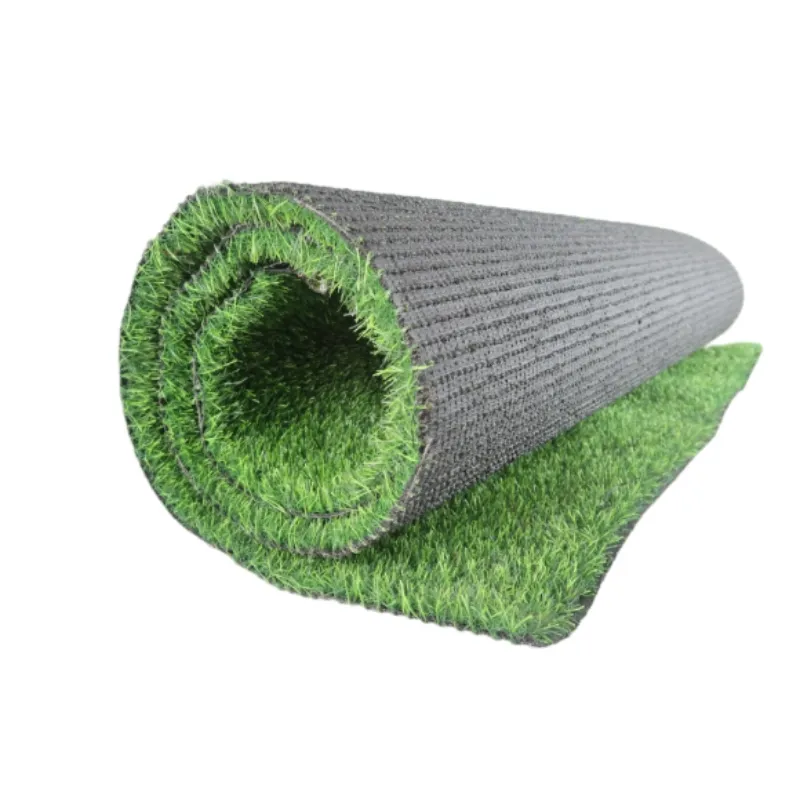
- Afrikaans
- Arabic
- Belarusian
- Bengali
- Czech
- Danish
- Dutch
- English
- Esperanto
- Estonian
- Finnish
- French
- German
- Greek
- Hindi
- Hungarian
- Icelandic
- Indonesian
- irish
- Italian
- Japanese
- kazakh
- Rwandese
- Korean
- Kyrgyz
- Lao
- Latin
- Latvian
- Malay
- Mongolian
- Myanmar
- Norwegian
- Persian
- Polish
- Portuguese
- Romanian
- Russian
- Serbian
- Spanish
- Swedish
- Tagalog
- Tajik
- Thai
- Turkish
- Turkmen
- Ukrainian
- Urdu
- Uighur
- Uzbek
- Vietnamese
turf per square meter
Dec . 07, 2024 11:50 Back to list
Understanding Turf Density An Insight into Turf Per Square Meter
Turf, often referred to as lawn or grass, plays a vital role in landscaping, sports fields, and parks. It not only enhances the aesthetic appeal of urban and rural spaces but also contributes to environmental health by reducing carbon footprints and improving air quality. One of the essential metrics in turf management is the concept of turf density, often expressed in terms of turf per square meter. Understanding this metric is crucial for gardeners, landscapers, and anyone interested in maintaining a vibrant lawn.
What is Turf Density?
Turf density refers to the amount of grass that grows in a given area, typically measured per square meter. This measurement is critical because it dictates the overall health and appearance of the lawn. High turf density indicates a thick, lush lawn with minimal bare spots, while low density can result in a sparse appearance, making it vulnerable to weeds and pests.
Turf density is influenced by a variety of factors, including grass species, seeding rates, climate, soil health, and maintenance practices such as mowing, fertilization, and irrigation. Different grass species have different growth habits and optimal growing conditions, impacting how densely they cover the ground.
Importance of Measuring Turf Per Square Meter
1. Aesthetic Appeal A well-maintained lawn with high turf density is visually appealing and can increase property value. A lush green lawn serves as an inviting backdrop for outdoor activities, social gatherings, and enhances the overall environment of a home or business.
2. Soil Protection Dense turf plays a key role in preventing soil erosion. A thick layer of grass roots helps bind the soil together, reducing runoff and protecting against erosion caused by wind and water.
3. Environmental Benefits Turf contributes to biodiversity by providing habitat for various organisms. A healthy, dense lawn can absorb more carbon dioxide and produce oxygen, improving air quality and combating climate change.
4. Weed Control A lawn with high turf density can outcompete weeds for resources such as sunlight, water, and nutrients. This reduces the need for chemical herbicides, promoting a healthier ecosystem.
turf per square meter

5. Sports and Recreation For sports fields and recreational areas, turf density is crucial for performance. A dense grass cover provides a safe and stable surface for athletes, reducing the risk of injuries and ensuring optimal playability.
How to Achieve Optimal Turf Density
Achieving the desired turf density per square meter involves a combination of proper selection, maintenance, and care practices
1. Choosing the Right Grass Type Different grass species thrive under different conditions. Cool-season grasses, such as Kentucky bluegrass, generally perform well in northern climates, while warm-season grasses like Bermuda and Zoysia are better for southern areas. Selecting the appropriate species for your climate ensures better density.
2. Seeding Rates Using the correct seeding rate is essential for achieving optimal turf density. Over-seeding can lead to competition among seedlings, while under-seeding results in bare patches. It is generally recommended to follow the seed package instructions for the best results.
3. Soil Health Conducting soil tests can help in understanding nutrient needs. Amend the soil with organic matter or fertilizers to provide essential nutrients that promote healthy grass growth.
4. Proper Watering Consistent and adequate watering is key to maintaining turf density. Grass roots need sufficient moisture, especially during dry periods. However, overwatering can lead to diseases; hence, finding the right balance is essential.
5. Regular Mowing and Aeration Regular mowing encourages lateral growth, promoting turf density. Aerating the lawn reduces soil compaction, enhances root development, and improves nutrient and water absorption.
Conclusion
Turf per square meter is a critical metric in lawn care that directly impacts the health, appearance, and ecological benefits of a lawn. By understanding the principles of turf density and employing proper maintenance techniques, homeowners and landscapers can foster a vibrant, resilient lawn that enhances both the environment and quality of life. Whether for aesthetic purposes, environmental benefits, or recreational uses, achieving a high turf density is a goal worth pursuing.
-
The Benefits of Artificial Turf for Indoors
NewsJul.15,2025
-
How Artificial Grass Suppliers Ensure Quality Products
NewsJul.15,2025
-
Artificial Grass and Pets: A Space for Relaxation
NewsJul.08,2025
-
Balcony & Outdoor Decoration with Artificial Grass
NewsJul.08,2025
-
Best Indoor Artificial Grass for Home
NewsJul.07,2025
-
Best Pet Turf for Dogs: Safe & Durable Artificial Grass Options
NewsJul.07,2025
Products categories









